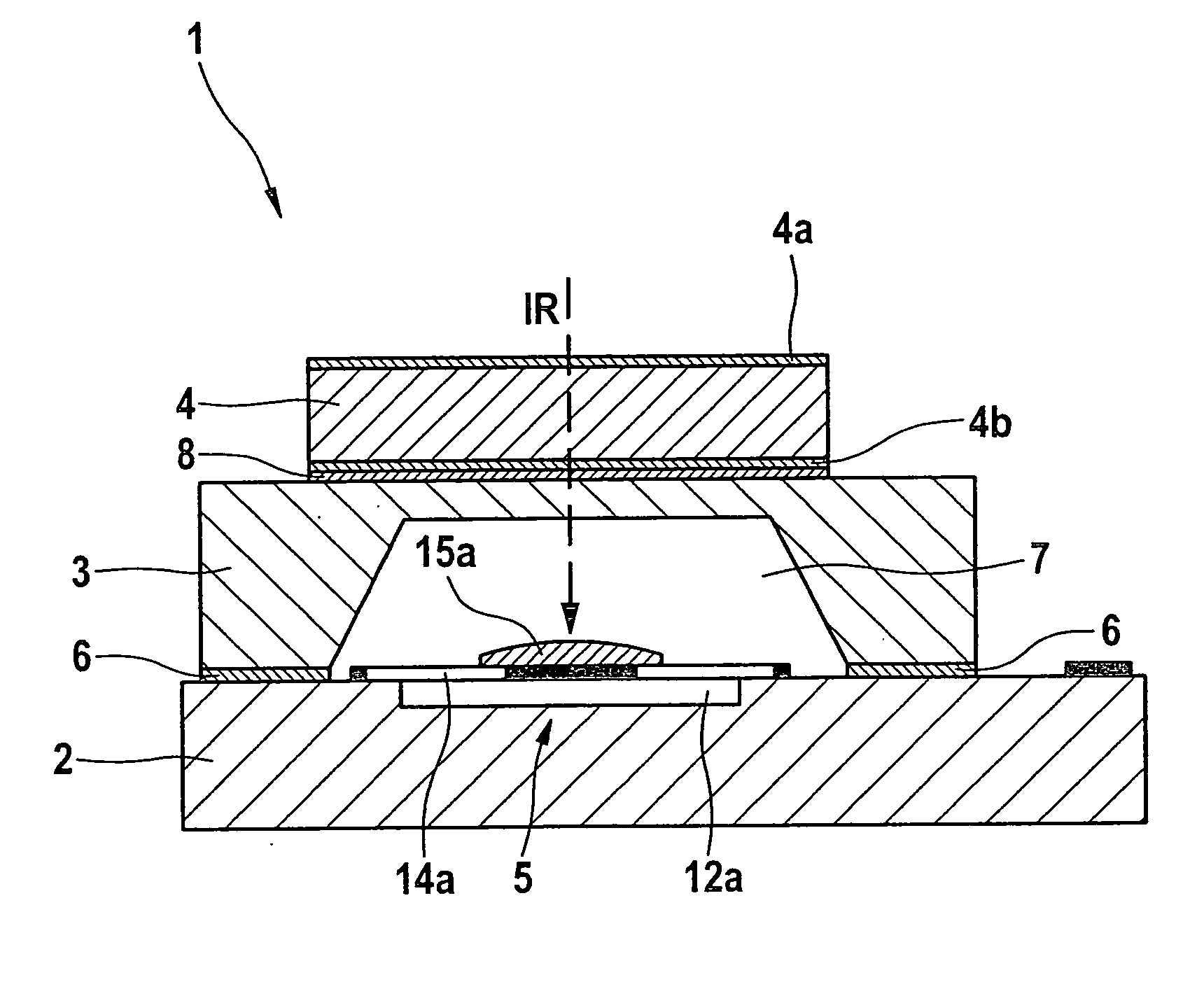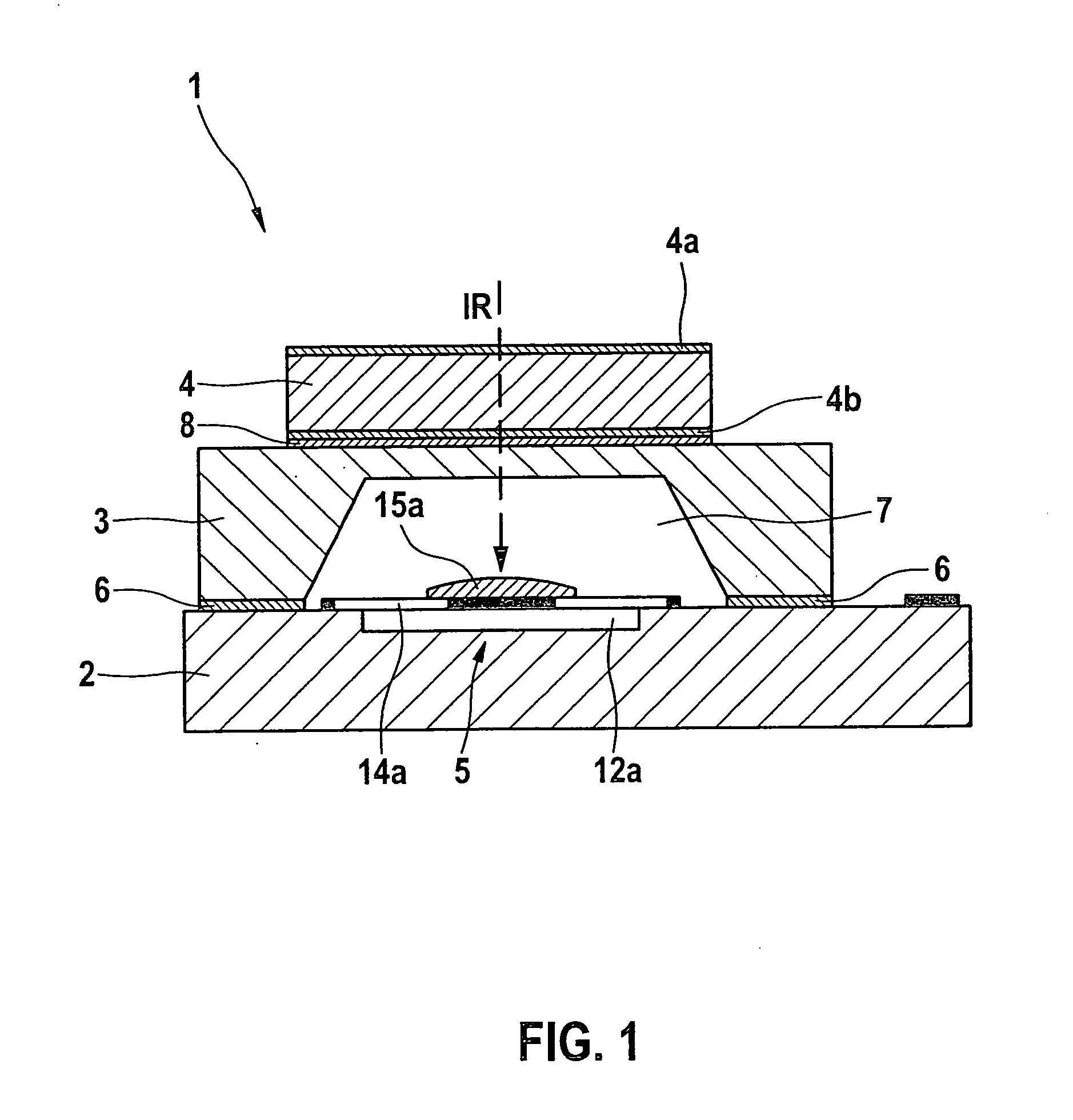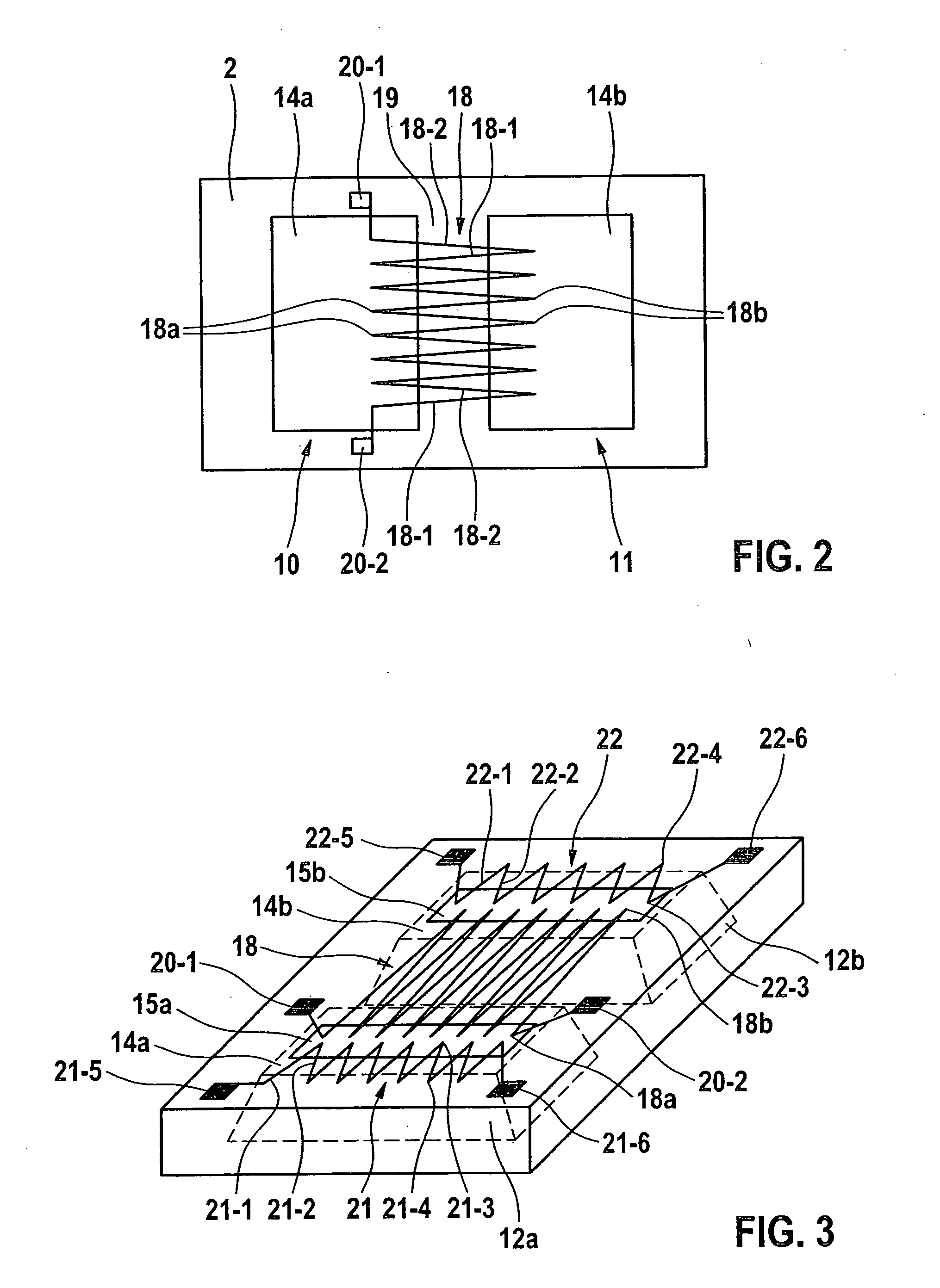Microstructured sensor for the detection of IR radiation
- Summary
- Abstract
- Description
- Claims
- Application Information
AI Technical Summary
Benefits of technology
Problems solved by technology
Method used
Image
Examples
Embodiment Construction
[0021]According to FIG. 1, a sensor 1 has a sensor substrate 2, a cap substrate 3, and a filter substrate 4 or filter chip, which are implemented as a shared stack or chip stack.
[0022]A sensitive detector structure 5, which has a measuring channel 10 and a reference channel 11, which are shown in greater detail in FIGS. 2 and 3, is implemented on the upper side of sensor substrate 2. Cap substrate 3 is fastened on its lower side using a vacuum-tight seal glass connection 6 on the upper side of sensor substrate 2 outside detector structure 5, so that a cavity 7, which is implemented on the lower side of cap substrate 3, receives detector structure 5 in a vacuum. Filter substrate 4 is fastened on the upper side of cap substrate 3 via an IR-transparent adhesive layer 8. Filter substrate 4 is advantageously structured in such a way that it filters incident IR radiation IR selectively by wavelength and transmits IR radiation of a specified wavelength range in each case to measuring chann...
PUM
 Login to View More
Login to View More Abstract
Description
Claims
Application Information
 Login to View More
Login to View More - R&D
- Intellectual Property
- Life Sciences
- Materials
- Tech Scout
- Unparalleled Data Quality
- Higher Quality Content
- 60% Fewer Hallucinations
Browse by: Latest US Patents, China's latest patents, Technical Efficacy Thesaurus, Application Domain, Technology Topic, Popular Technical Reports.
© 2025 PatSnap. All rights reserved.Legal|Privacy policy|Modern Slavery Act Transparency Statement|Sitemap|About US| Contact US: help@patsnap.com



